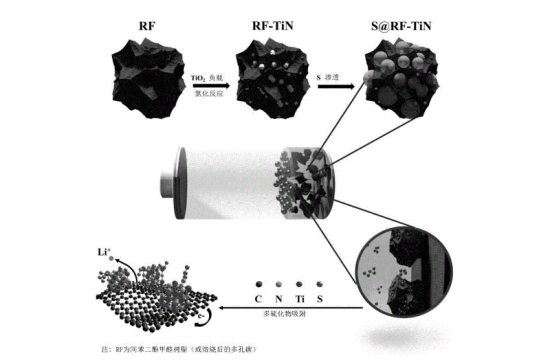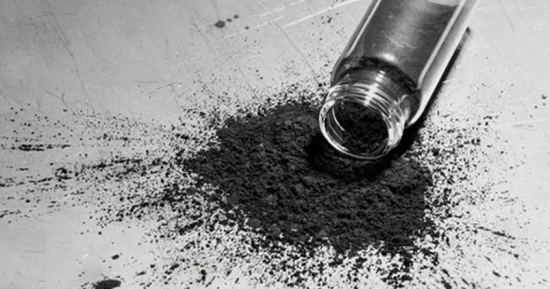【Graphite】Ruling the Anode for 30 Years?

Graphite electrodes are primarily used in electric arc furnace (EAF) steelmaking, serving as a crucial high-temperature conductive material. They are also widely applied in the aluminum industry, electrolytic cells, and chemical equipment as conductive and heat-resistant components.
【Graphite】Ruling the Anode for 30 Years?
The Art of Interlayer Intercalation:
How has graphite ruled the anode for 30 years?
When you plug in your phone charger or extend the range of an electric vehicle, you may not realize—the core that allows current to flow "smoothly" is hidden in a thin layer of graphite inside the battery. Since Sony launched the first commercial lithium battery in 1991, graphite has firmly occupied the "throne" of anode materials for 30 years. What allows it to rule for so long? The answer lies in the exquisite "art" of interlayer intercalation.

1. Li⁺'s "Apartment Building":
The core principle of graphite anodes
The atomic structure of graphite resembles a neatly stacked "thousand-layer cake"—hexagonal planes composed of carbon atoms, layered to form a stable lamellar structure. During battery charging, Li⁺ (lithium ions) act like "residents" looking for a home, inserting themselves between the graphite layers in a process called "intercalation"; during discharge, Li⁺ "move out" from between the layers, flowing through the external circuit to supply power to devices.
This seemingly simple "in-and-out movement" conceals graphite's key advantage: each gram of graphite can accommodate up to 372 mAh of charge (the theoretical capacity of graphite), without breaking the layered structure or shedding particles during charge-discharge cycles. Compared with other anode materials, graphite's stability is remarkable—the "hexagonal warrior"—which is the core reason it has dominated the market for so long.
2. From "Rock" to "Anode":
The two "cultivation paths" of graphite
The graphite anodes we use are mainly divided into "natural graphite" and "artificial graphite," each with a very different "growth path," but both undergo a "high-temperature test."
01) GRAPHITE
Natural Graphite: The top student "purified" from ore
Natural graphite comes from graphite mines, like a "raw stone" extracted from nature, but it cannot be used directly—it contains impurities that affect Li⁺ intercalation. The first step is "high-temperature purification": baking in a 3000°C furnace (500°C higher than volcanic lava) to completely burn off impurities, yielding graphite with over 99.99% purity.
However, the surface of natural graphite is too "smooth," causing Li⁺ to "slip" during intercalation and react with the electrolyte to form by-products. Engineers therefore apply a "surface oxidation coating"—like putting a "protective layer" on the graphite, making Li⁺ intercalation smoother and reducing side reactions, thus extending battery life.

02) GRAPHITE
Artificial Graphite: The customized version "made" from petroleum coke
If natural graphite is "born beautiful," artificial graphite is "finely sculpted later." Its raw materials are petroleum coke (a by-product of petroleum processing) and pitch. They are first mixed and shaped, then placed in a 2800°C high-temperature furnace for "graphitization"—reordering the disordered carbon atoms into neat layered structures, finally forming artificial graphite.
The advantage of artificial graphite lies in its "customizability": by adjusting the particle size of petroleum coke and the proportion of pitch, the layer spacing and porosity of graphite can be precisely controlled to suit different battery needs (e.g., small and precise for phone batteries, large-capacity for EV batteries). Today, over 70% of power battery anodes on the market use artificial graphite.
3. 4% "Glue" + 96% Graphite:
The golden ratio of anode formulation
Good graphite also requires a good "formula" to perform effectively. The core formula of anodes is very simple: 96% graphite particles plus 4% binder (mainly CMC and SBR). Don't underestimate this 4% binder—it acts like "glue," firmly adhering graphite particles to the copper foil, preventing graphite from "shedding" during charge-discharge cycles; at the same time, it forms tiny channels for smooth Li⁺ passage.
Additionally, the electrolyte contains a component called FEC (fluoroethylene carbonate), which forms a "protective film" on the graphite surface, further reducing side reactions during Li⁺ intercalation and making the battery more durable and safer. These seemingly minor "details" are key to the stable operation of graphite anodes.
4. 35% Market Share + 0.8 CNY / Wh:
The commercial empire of graphite
Today's graphite anode market has long formed a "giant-led" landscape. Among them, BTR is the absolute "leader"—for every 3 lithium battery anodes globally, 1 comes from BTR, with a market share as high as 35%. Its cost control is also remarkable: only 0.8 CNY per Wh. For reference, a 50 kWh EV battery costs less than 4,000 CNY for the anode alone, providing crucial support for lowering prices of new energy vehicles.
From the first commercial use 30 years ago to supporting today's trillion-yuan lithium battery industry, graphite has proven through the art of "interlayer intercalation" that "stability" is the core competitiveness. In the future, although new materials such as silicon-based anodes continue to emerge, graphite, with its mature technology and low cost, will still hold an important position in the anode market.
Source: Battery Times
Feel free to contact us anytime for more information about the Graphite Products market. Our team is dedicated to providing you with in-depth insights and customized assistance based on your needs. Whether you have questions about product specifications, market trends, or pricing, we are here to help.
No related results found








0 Replies